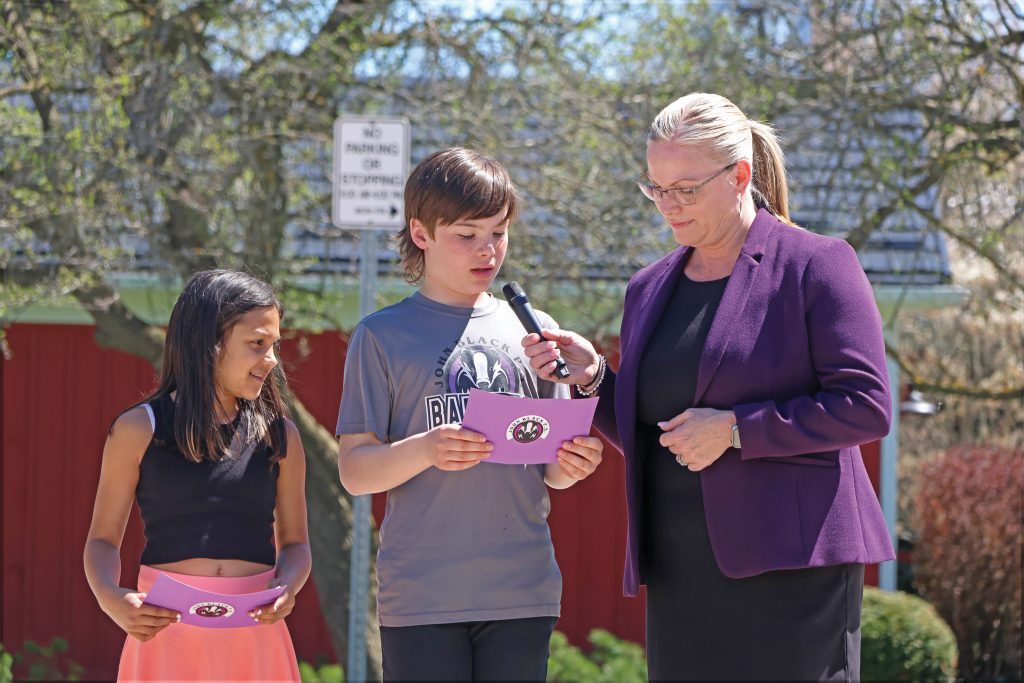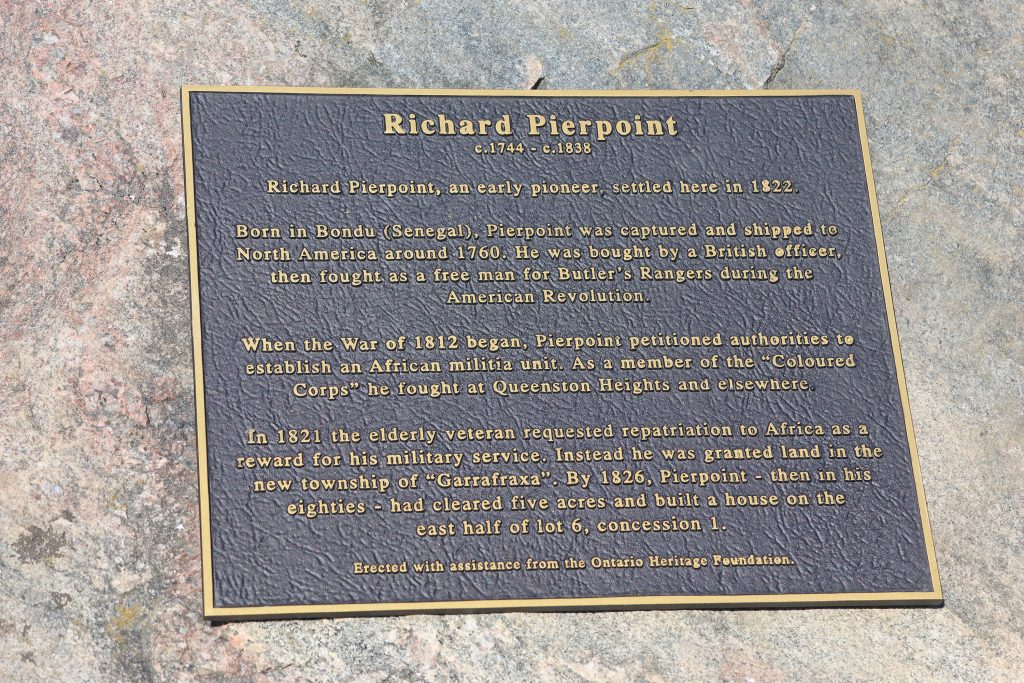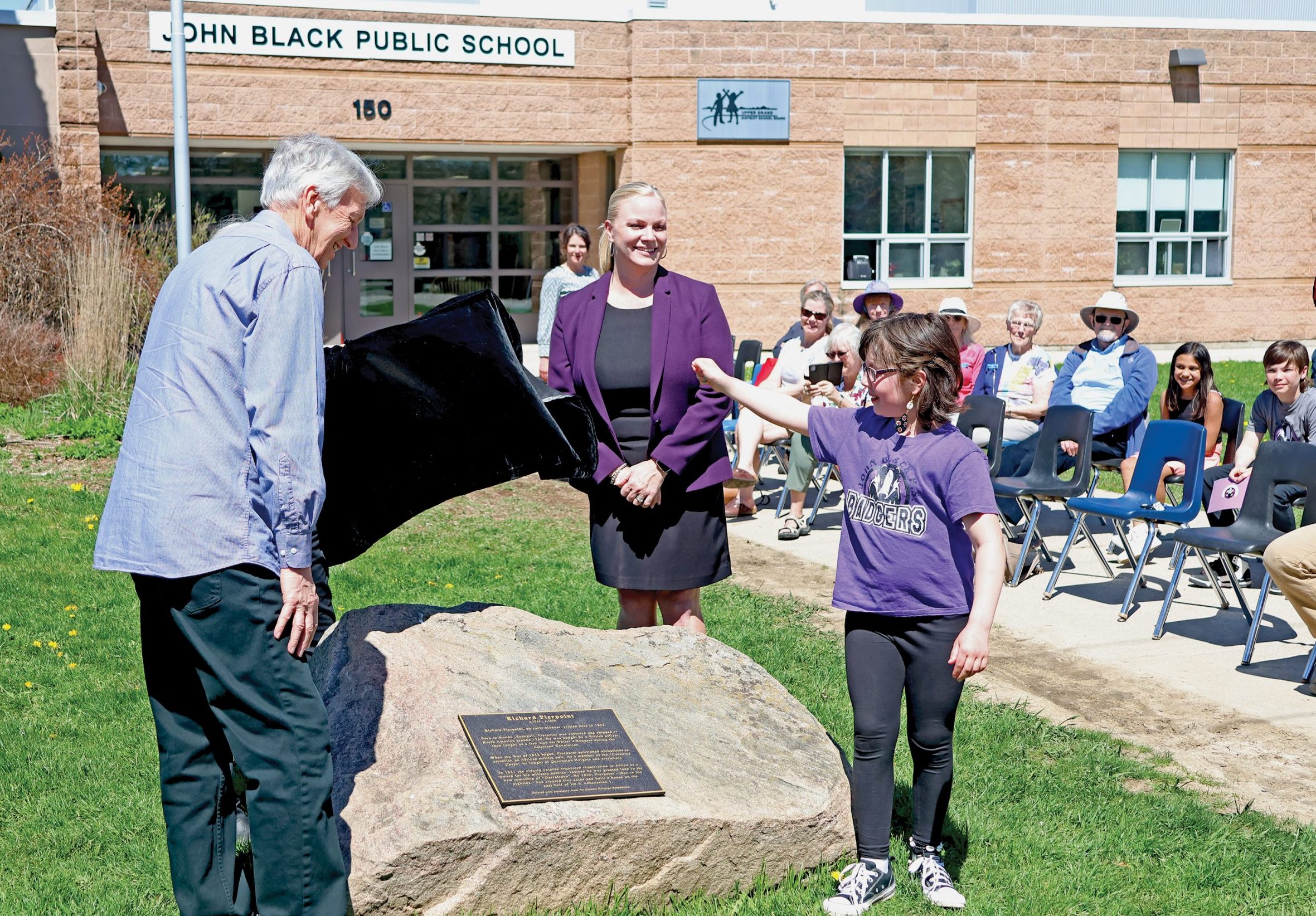FERGUS – It has been nearly 30 years since a plaque commemorating the life of Richard Pierpoint was first installed at John Black Public School, but it is clear the marker continues to play an important role in connecting students to Black history.
The recently refurbished plaque was unveiled anew on May 2 at a ceremony during which several students read statements highlighting their connections to the land that bears the name of the early pioneer and Black settler.
“Our school and the property that is now called Pierpoint Park has a long, rich history and many stories to tell,” said Grade 4 student Aleeza Massey.
She went on to describe the First Nations peoples who once lived off the land, its settlement by Pierpoint, and the later settlement by Europeans.
Massey was the last student to speak, taking her turn after fellow Grade 4 student James Black, who read a poem about Pierpoint written by a Grade 8 student.

John Black Public School student James Black, flanked by fellow student Aleeza Massey and school principal Sarah Schoettler, reads a poem about African-Canadian pioneer Richard Pierpoint during a ceremony to unveil a refurbished historical plaque at the school on May 2.
Photo by Jessica Lovell
Pierpoint was born in 1744 in a part of Africa that is now part of Senegal.
He was captured and sold into slavery at the age of 16, and gained his freedom by fighting for the British in the American Revolution. He later went on to fight as a member of the “Coloured Corps” in the War of 1812.
He was an old man by the time he was granted land in the 1820s in what is now Centre Wellington.
It’s a piece of local history that Peter Meyler told students was unknown to him when he grew up in the area many years ago.
Meyler, who led the initiative to install the heritage plaque at the school in 1995, told students how he had learned of Pierpoint in the 1980s when a two-volume history of Fergus was released.
“There was about a page and a half about someone called Richard Pierpoint,” Meyler said, emphasizing how little was included about the man.
“He was completely left out of our history,” Meyler told the audience, which included Wellington County and Centre Wellington council members, Upper Grand District School Board representatives, Heritage Centre Wellington members, Wellington County Historical Society members, and students and teachers of the school.
It was about a decade after Meyler first learned of Pierpoint that he decided he had to do something to recognize the man. He learned of a program that offered matched funds to pay for heritage plaques, and began to do further research in order to secure the grant money.
A Stolen Life
The research led to the book that he and brother David Meyler wrote about Pierpoint, titled A Stolen Life: Searching for Richard Pierpoint.
Both the book and the heritage plaque are a part of an effort to recapture a piece of history they felt had been missed.
“I didn’t want his story to be left out for you guys as it was for me,” Meyler said.
Unfortunately, over time the plaque had become weathered, prompting the Wellington County Historical Society to ask the school if it could remove it and have it refinished. The group was able to complete the work with help from a county grant.

The plaque honouring Richard Pierpoint was originally installed on a rock in the garden of John Black Public School in 1995. It has now been refurbished and sits on the lawn of the school, facing the sidewalk.
Remounted on its rock, the plaque now occupies a more prominent position, facing the sidewalk at the front of the school.
It’s a spot principal Sarah Schoettler said makes it more accessible for the public wanting to learn more about Pierpoint and his connection to the area.
She noted the plaque is an important anchor for teaching the kids about history.
“You can hear from the kids the amount of learning they do with our staff,” Schoettler said.
Centre Wellington Black Committee president Millicent Gordon, one of the guests at the unveiling, said listening to students speak about what they have learned was the most striking part about the event.
“What I find so amazing is the children and the way they have become so actively involved,” said Gordon.
She noted the obvious pride students feel for their school, and its connections not just to history, but to the nature abundant in Pierpoint Park.
“I think this is sowing a seed that will grow and grow,” said Gordon.



